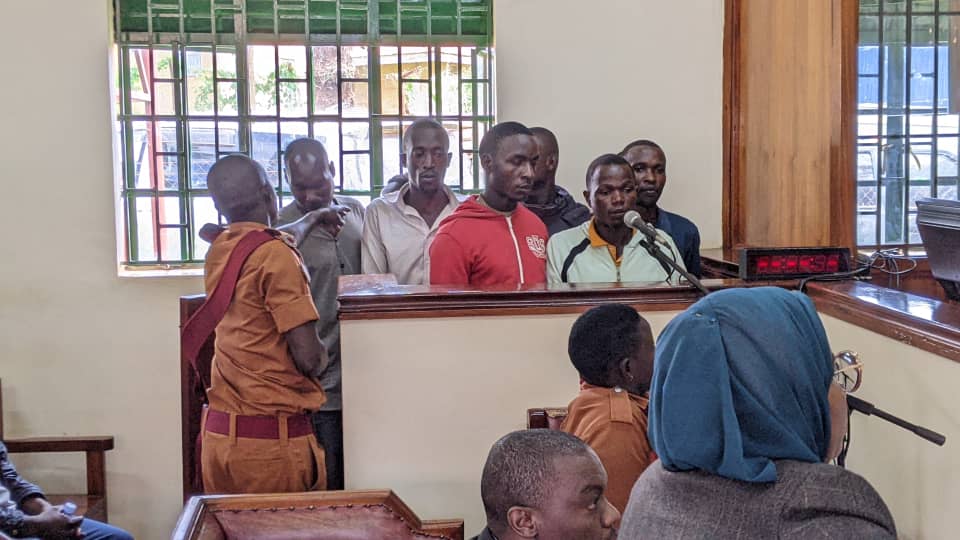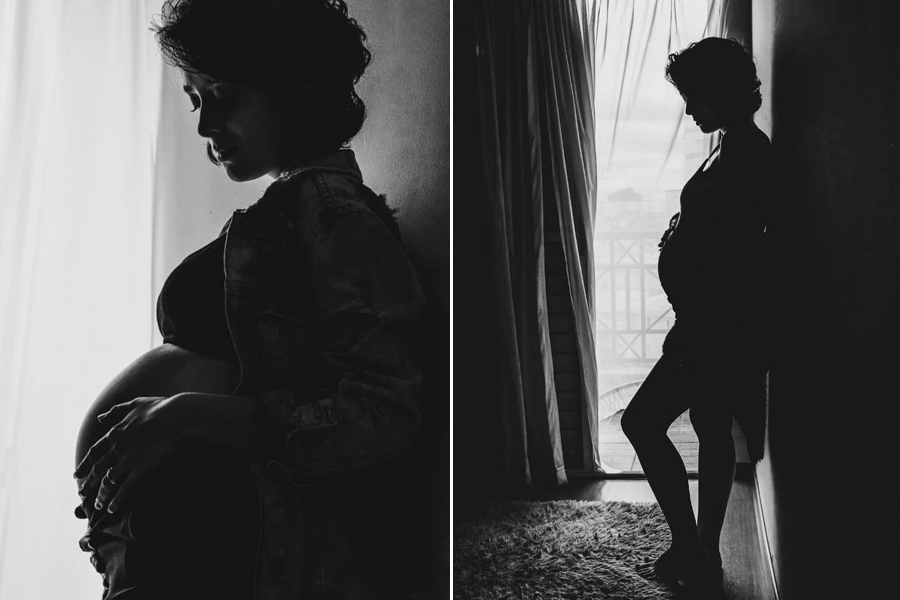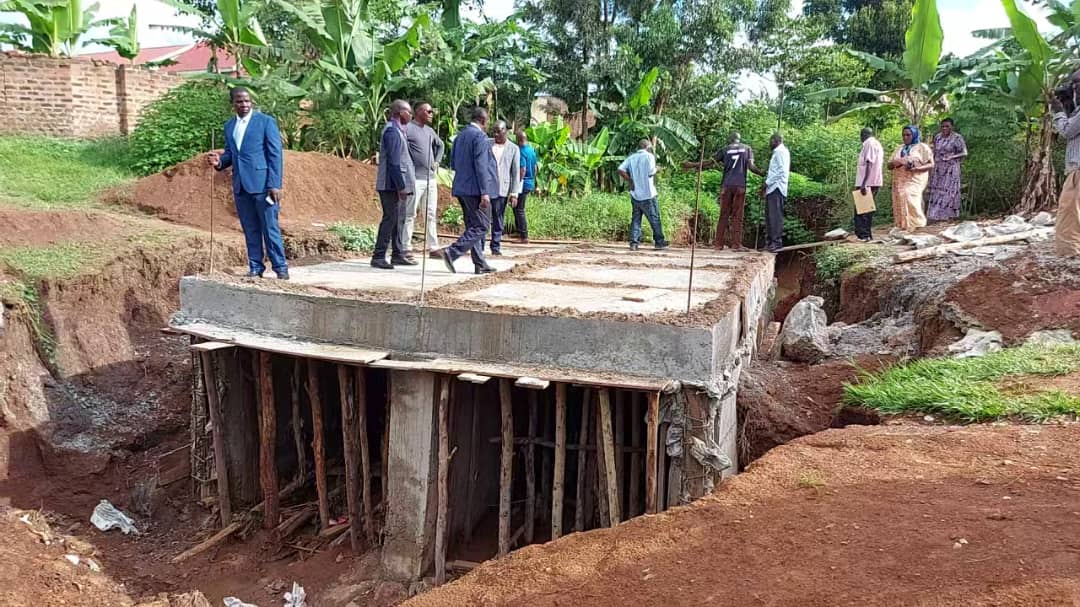Lalibella, the city of Ethiopia’s Rock-cut churches, fertility pools
From the airport in Labella, a community of small grass thatched and iron roofed shelters seen as visitors meander to the town of ancient holdings. According to tour guides, the city mainly has orthodox Christians.
The town holds the history of Ethiopia’s second civilisation of the dynasty under King Gebre Mesque Lalibela of the twelfth and thirteenth centuries.
Labella is said to have built the eleven churches after he visited Jerusalem and returned to build a second Jerusalem. Lalibella is Ethiopia’s second civilisation of the Zagwe dynasty housing eleven churches including; Biete Medhane Alem (the house of the savior), Biete Maryam (house of Mary), Biete Golgotha Mikael (house of Golgotha Michael), Biete meskel (House of the cross) Biete denagel (House of Virgins), Biete giyorgis (the house of Saint George), Biete amanuel (House of Emmanuel), Biete Qeddus Mercoreus (house of Saint Mark)
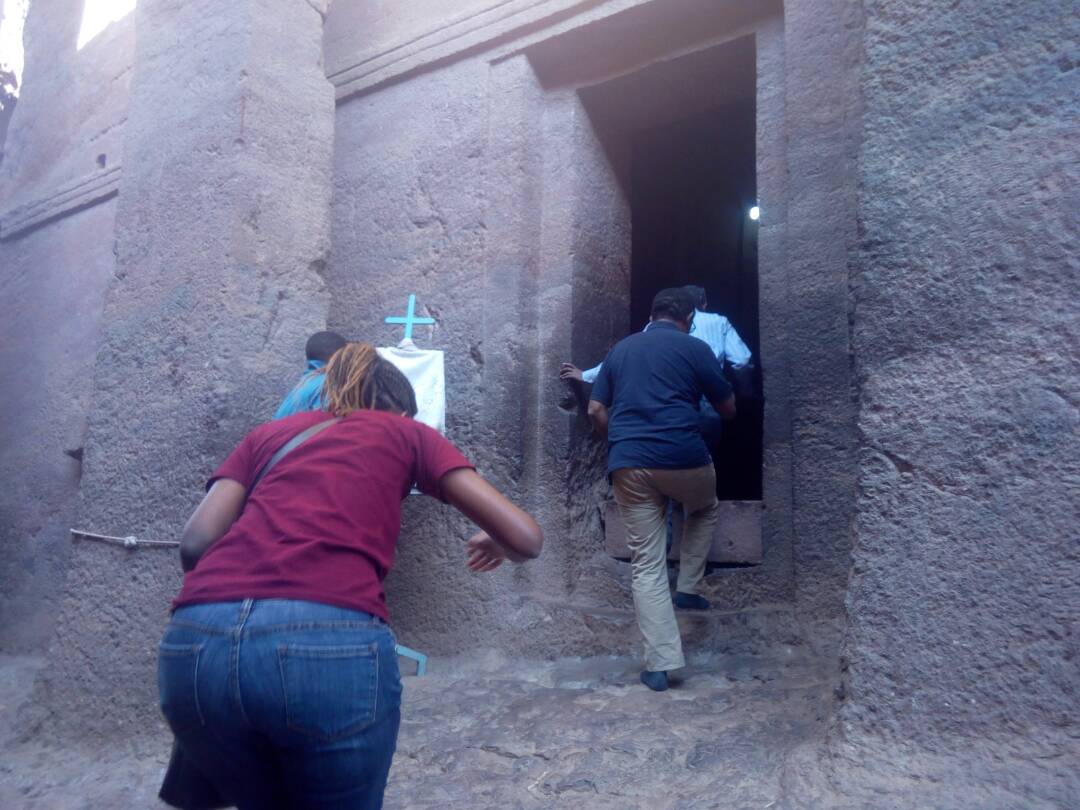 Entrance to Biete Medhane Alem
Entrance to Biete Medhane Alem
Biete abba libanos (House of Abbot Libanos) Biete Gabriel (House of Angel Gabriel and Raphael) and Biete Lehem (House of Holy bread).
A gate at one side leads past a recent church down rocks to some of the town’s most attractive churches which were in ancient times carved within rocks. Lalibela marks Ethiopia’s civilisation of rock-hewn architecture.
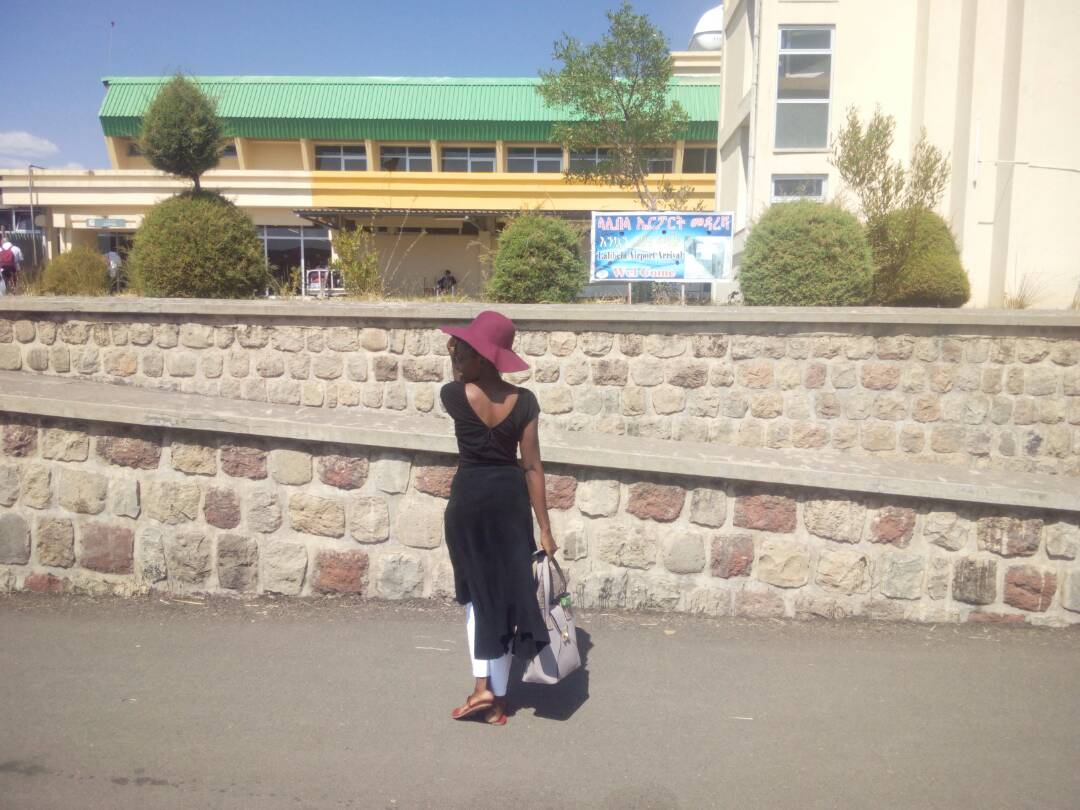 The writer at the airport in Lalibela.
The writer at the airport in Lalibela.
Biete Madhane Alem, one of the eleven churches built by King Lalibela sits under tiled roof as part of the country’s reconstruction and protective initiatives. The church had eleven huge pillars outside, three doors one used by women, another men and the last by monks.
The church sits right inside a rock from which it was cut with a high surrounding rock which was meant to protect the church ancient Muslim attackers who intended to destroy the Ethiopian Orthodox Christian faith.
Inside the church are different rock pillars that separate the sitting areas for the men and women from monks. In front of the church place marked with bright orange, red and golden curtains is the holiest in the church. Behind it sits a replica of the ark of God, a place only accessed by monks.
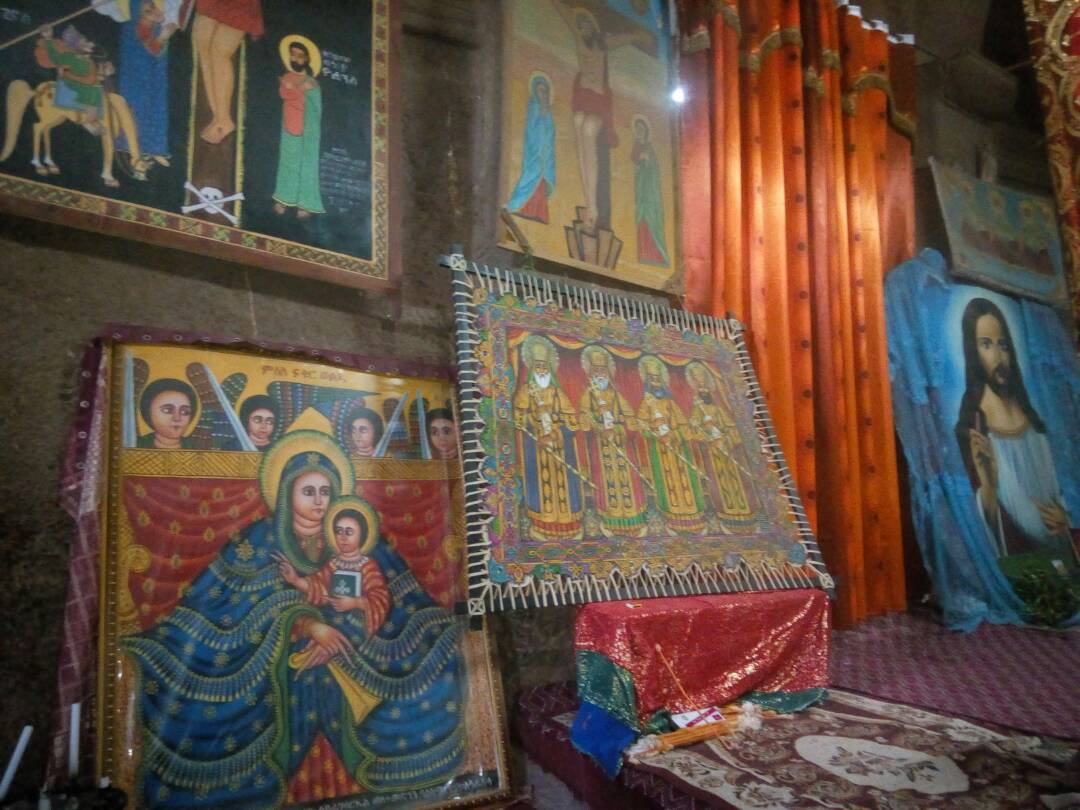 The holiest of places in church behind the orange garments is a replica of the arch of God.
The holiest of places in church behind the orange garments is a replica of the arch of God.
Between this and another rock cut compound is a small cave path connecting to Biete Maryam translated, house of Mary. The house of Mary is not so different from the house of Golgotha except it’s smaller in size.
The same has an outstanding feature; a fertility pond sits at one of the corners in the compound. The pond is said to be very deep with water that is currently covered with green as though an act of patience waiting to give the blessing of the womb.
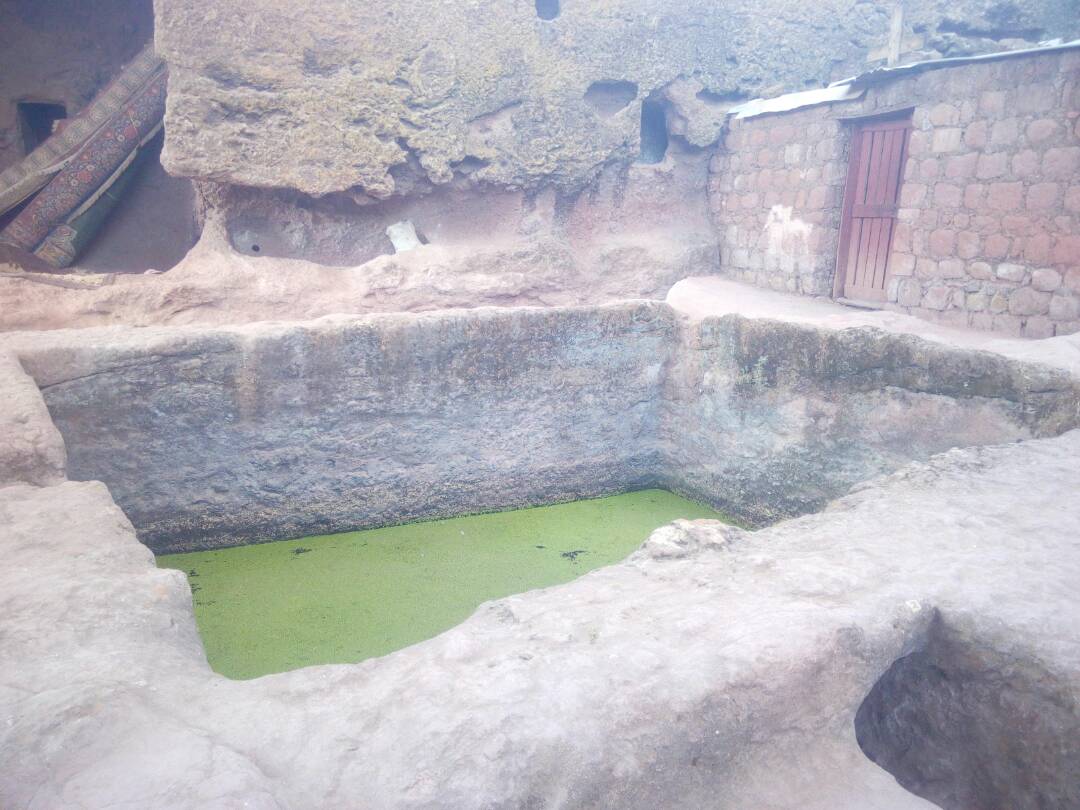 The Fertility pool
The Fertility pool
Our tour guide informs us that on the 7th of January when orthodox Christians celebrate Christmas and many come for pilgrimage to the church, women who have had fertility issues are tied on a rope and fully dipped in the water three times and they are able to conceive thereafter.
He adds ‘that’s why we have so many children in Ethiopia’
One thing stands out about the different churches all ceilings are covered with ancient paintings of the teachings of the orthodox teachings; these were used to teach people who didn’t understand geez, the then language used for teaching religious aspects.
So preachers used the images and when believers looked at the paintings they were able to understand their faith.
Meandering small corridors leads us back to the first compound and another caved path leads us to the house of the virgins.
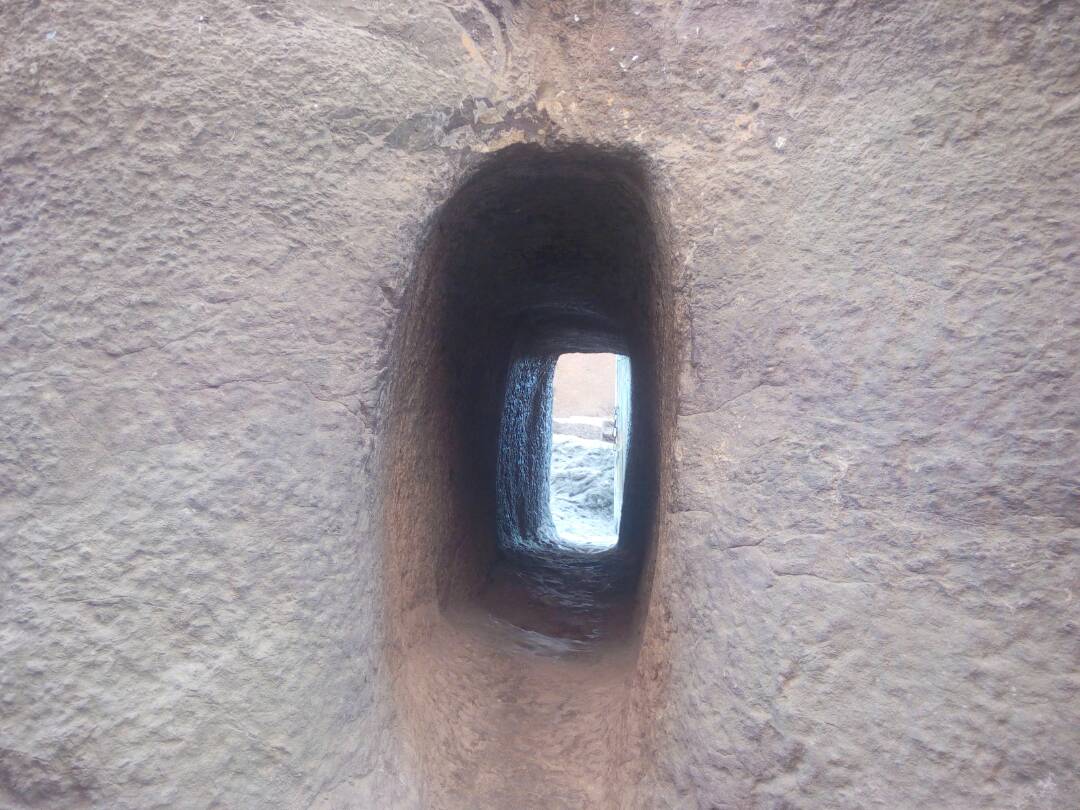 One of the caved paths leading between the different churches.
One of the caved paths leading between the different churches.
A high walled open path called illustrating Adams grave leads us away and out of the compound of the churches.
A walk down hill and across the road leads us to another church, the St Gorge church. This is also one of the many churches built by King Lalibella.
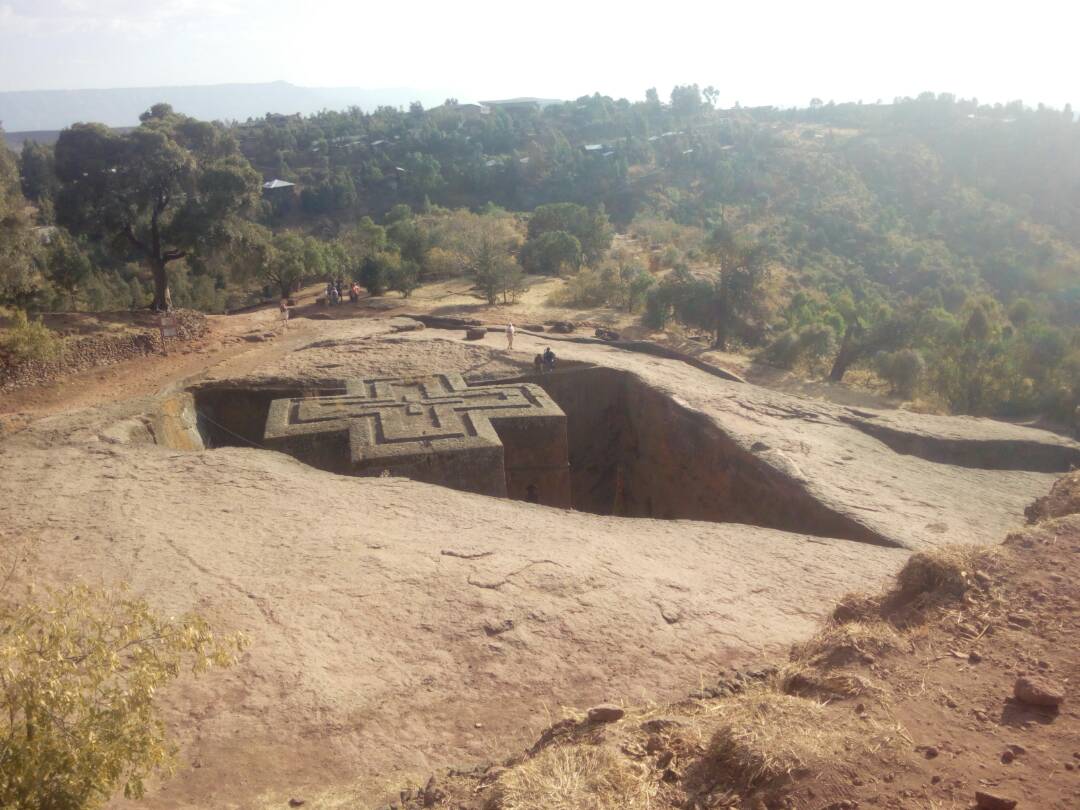 St George Church
St George Church
The church sits inside a rock and from the top it is marked by two big crosses drawn on the roof of the church.
Meandering corridors run through the rocks one for access but high rock stands above them for protection from ancient attackers.
Like it is at most of the historical sites, children, youths and women try to sell off numerous treasuries from art pieces to precious stones. A local small community trying to earn every penny from tourists that come across.
A child tries to convince me ‘madam this stone has shine inside, you make jewellery’ minimal English but enough effort, I however cannot buy it. I wouldn’t use it for anything if I took it home.
I also find Lalibella discomforting as flies endlessly roam the sites. At some point I over hear a tourist ask his guide ‘Don’t you have house fly swaths’ and in my mind I know this would also be a good venture helping visitors or pilgrims keep discomforting flies out of their faces.



